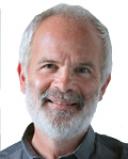Post written by Aneta Pavlenko.
In 1953, Costa-Rican ambassador in Italy, Teodoro Castro, and his beautiful Mexican wife Laura welcomed to the world a baby daughter, Romanella. The ambassador was a well-known public figure, so imagine the surprise when soon after Romanella’s birth the family disappeared without a trace. Even more surprisingly, the family resurfaced in Moscow, where Castro became once again a Soviet citizen, Iosif Grigulevich, and embarked on a second career, that of a professor of Latin American history. Yet the most surprising twist is that Castro-Grigulevich, born in Vilnius in 1913, started learning Spanish only in his twenties, when he was exiled from Poland for his Communist leanings and eventually landed in Argentina.
While Castro and his family were whisked to safety, another Soviet spy was not so lucky. In 1961, Scotland Yard’s Special Branch apprehended a wealthy businessman, Gordon Lonsdale, in the process of receiving secret information from the former Royal Navy officer Harry Houghton. Both were put on trial, together with their co-defendants in what became known as the Portland Spy Ring. Yet it was only in 1964, when Moscow proposed to exchange Lonsdale for a convicted British spy, Greville Wynn, that his identity was confirmed and his Russian name revealed: Konon Trofimovich Molody. Born in Moscow in 1922, Molody arrived in the UK in 1955 and spent several years in London as a successful Canadian businessman and a playboy.
How did these two men manage to pass for native speakers, while being constantly in the public eye? A previous post discusses the linguistic and cultural skills sleeper agents have to develop to manage this (see here). On a more academic level, a large-scale study conducted by Kenneth Hyltenstam, Niclas Abrahamsson, and Emanuel Bylund at Stockholm University provides us with intriguing insights into the phenomenon of ‘passing’ and the existence of the critical period for second language acquisition.
The study began a decade ago with newspaper advertisements inviting native Spanish speakers who thought they could pass for native speakers of Swedish to call in for an interview. At the end of the interview, participants were asked to talk for one minute about a subject anyone in Sweden can relate to, the famous Swedish author Astrid Lindgren. One hundred and ninety-five candidates passed the initial screening: the youngest started learning Swedish at the age of 1 and the oldest at the age of 47. Their speech samples were then mixed with samples elicited from 20 native speakers of Swedish, some of whom displayed dialectal features in their speech. These samples were then evaluated by 10 native speakers of Swedish who were told that their task was to differentiate Stockholm pronunciation from regional dialects and foreign accents.
The researchers found that 62% of those who learned Swedish between the ages of 1 and 11 ‘passed’ for native speakers with all or most of the judges. Among those who learned Swedish between the ages of 12 and 17, only 5 people ‘passed’ (6%) and among those who learned it between the ages of 17 and 47, none. Follow-up studies used a battery of measures beyond pronunciation to determine how native-like these ‘passers’ really were. They found that only a few of the early learners and none of the late learners displayed native-like performance across all tasks. Interestingly, the ones who were native-like in Swedish also tended to be native-like in Spanish. In the next set of studies, this superior performance was linked to high levels of language aptitude. Together, these findings suggest that, in and of itself, an early age of acquisition does not guarantee native-like performance, yet the researchers also underscore that what they studied is “non-perceivable non-nativeness”, which cannot be easily detected in everyday conversation.
Now back to our two spies. The documents released from Soviet archives reveal that Lonsdale-Molody was groomed for his activity early on. In 1932, Soviet authorities allowed 10 year old Konon to join his aunt in California, where he attended secondary school in San Francisco and became fluent in English before returning to Moscow in 1938. During World War II, he served in the intelligence unit of the Soviet Army, learning French and German, and after the war, he studied at the prestigious Institute of Foreign Trade where he acquired Chinese and even authored a Chinese textbook. His ‘passing’, therefore, can be explained by the combination of an early age of acquisition and superior language aptitude.
In contrast, Castro-Grigulevich did not begin studying Spanish until his early 20s but he did have an advantage of early multilingualism, for he grew up in Vilnius, surrounded by Yiddish, Russian, Polish, and Lithuanian. His contemporaries recall that he spoke fluently not only Russian, Polish, Lithuanian, and Spanish but also French, English, Italian, and Portuguese. Most importantly, both master spies claimed to be native speakers of a different variety of the target language: Lonsdale-Molody pretended to be a Canadian in the UK and Castro-Grigulevich an Argentinian in the service of the Costa-Rican government. Their ‘passing’, just like that of the late learners in the Stockholm study, suggests that while there may exist a critical period for ‘non-perceivable non-nativeness’, for all practical purposes, many late learners do achieve high degrees of fluency and some may even ‘pass’ as native speakers of the second language.
Dr. Aneta Pavlenko is Professor of Applied Linguistics at Temple University.
Photo of secret plans from Shutterstock.
References
Abrahamsson, N. & K. Hyltenstam (2009) Age of onset and native-likeness in a second language: Listener perception versus linguistic scrutiny. Language Learning, 59, 2, 249-306.
Bylund, E., Abrahamsson, N. & K. Hyltenstam (2012) Does first language maintenance hamper nativelikeness in a second language? A study of ultimate attainment in early bilinguals. Studies in Second Language Acquisition, 34, 215-241.
"Life as a bilingual" posts by content area.


